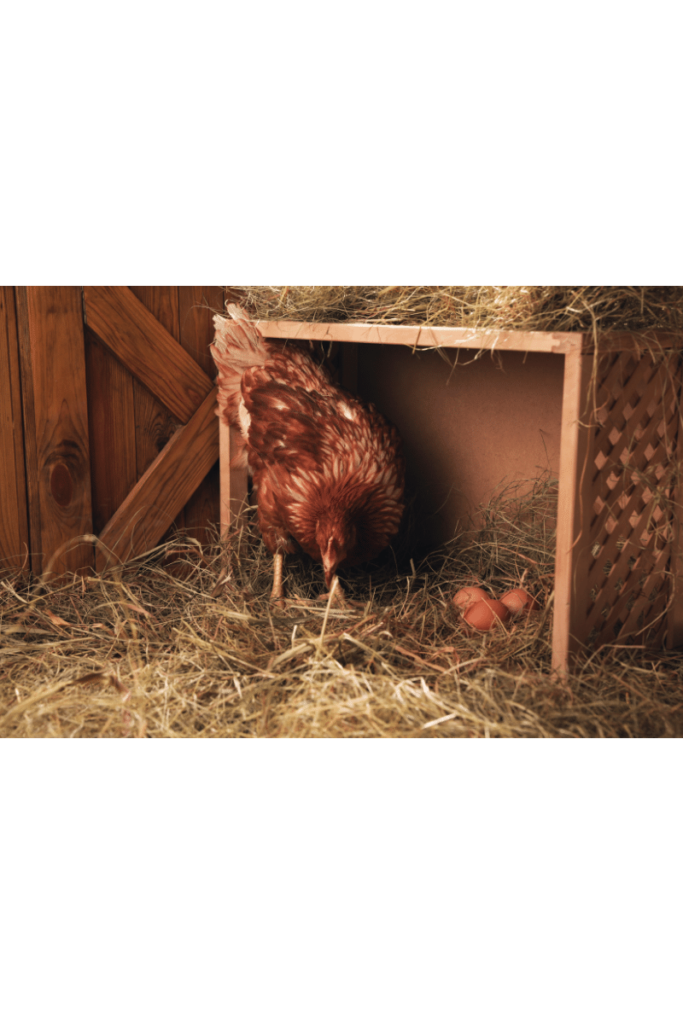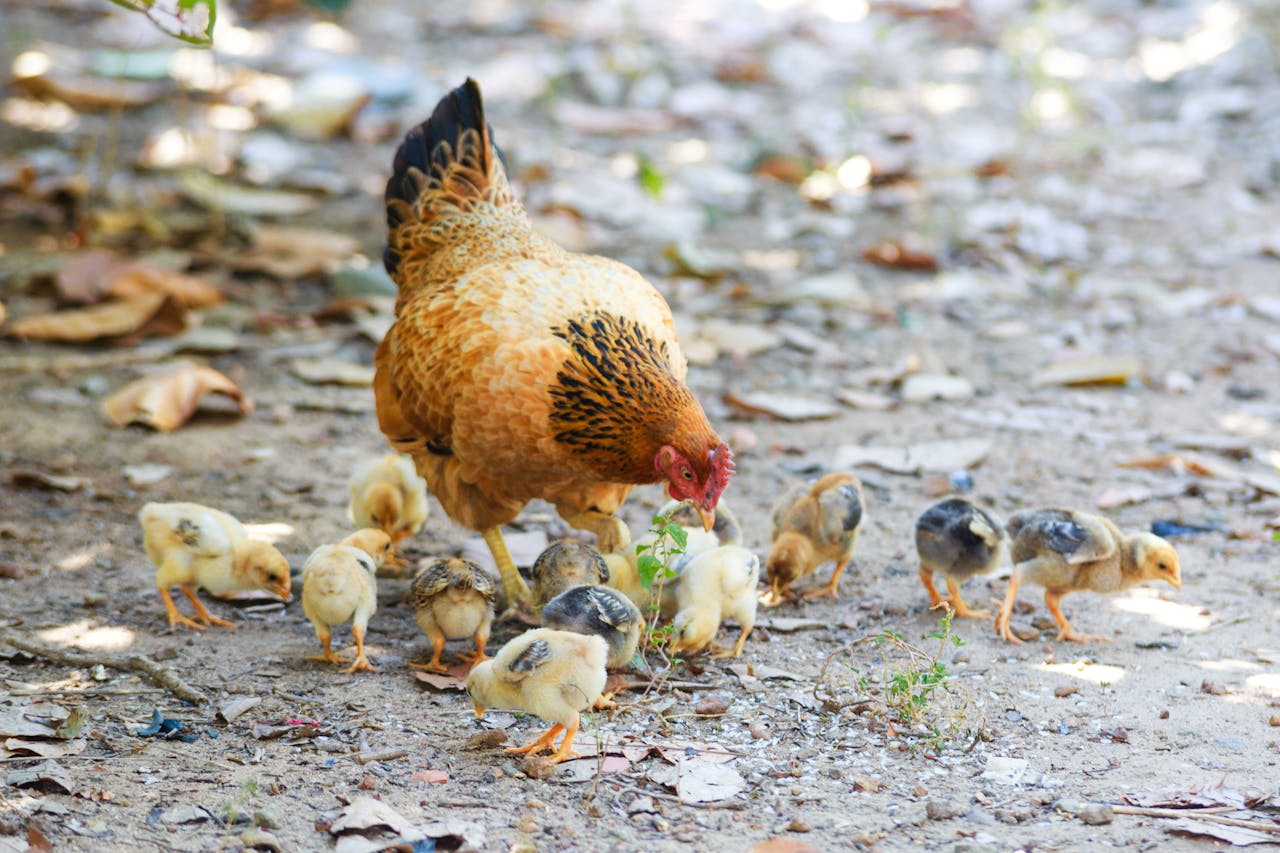When it comes to chicken rearing, one of the paramount features of any coop is the nesting box. It’s not just about providing a space for your chickens to lay eggs; it’s about understanding the natural instincts and behaviors of your feathered friends and accommodating them in ways that promote their health and happiness. Let’s dive deeper into what nesting boxes are and why they’re an indispensable part of chicken husbandry.
Definition and Purpose
At its core, a chicken nesting box is a designated space within the coop where hens can lay their eggs. These boxes are designed to mimic the safe, secluded spots hens naturally seek out in the wild. By providing a dark, quiet, and comfortable area, you encourage your hens to lay their eggs in a specific place, which makes egg collection easier and keeps the eggs cleaner and safer from breakage.
Nesting boxes play a crucial role in the behavioral well-being of your chickens. They offer a sense of security that can significantly reduce stress in laying hens, leading to more consistent egg-laying patterns and healthier birds. A well-constructed nesting box not only supports the physical needs of your chickens but also their emotional needs, providing a private space where they can fulfill one of their most basic instincts: nesting.
The Role of Nesting Boxes in Egg-Laying and Behavior
Egg-laying is a vulnerable time for hens, requiring privacy and comfort to lay successfully. Without proper nesting boxes, hens may become stressed, leading to a decrease in egg production or the laying of eggs in undesirable locations. This can result in eggs that are dirty, damaged, or difficult to find.
Moreover, nesting boxes influence the pecking order within the coop. Hens often prefer certain boxes, and higher-ranking hens will claim the best spots. Observing this behavior can offer fascinating insights into the social dynamics of your flock and help you manage your coop more effectively.
Nesting boxes also deter predators and reduce the likelihood of egg-eating, a behavior that can become problematic if eggs are laid in the open or in easily accessible places. By providing a secure and enclosed space, you minimize the risk of predation and the development of unwanted behaviors.
In summary, chicken nesting boxes are far more than simple containers for egg collection. They’re a critical component of your chickens’ environment, influencing not only their physical well-being but their emotional health as well. By understanding and providing the right type of nesting box, you create a happier, healthier home for your hens, ensuring they remain productive and content.

Types of Chicken Nesting Boxes (500 Words)
Choosing the right type of nesting box is vital for the comfort and productivity of your chickens. There are several materials and designs to consider, each with its own set of benefits and considerations. Let’s explore the most common types of chicken nesting boxes to help you decide which is best suited for your flock.
Standard Wooden Boxes
Wooden nesting boxes are a traditional choice, favored for their natural appearance and ease of customization. They can be built from scratch or purchased pre-made and are easily integrated into most coop designs. Wood has excellent insulation properties, providing a cozy environment for laying hens during both hot and cold weather. However, wooden boxes require regular maintenance to prevent rot and pest infestation. They also need to be properly sealed and painted to make cleaning easier and extend their lifespan.
Plastic Nesting Boxes
Plastic nesting boxes are gaining popularity for their durability and ease of cleaning. Unlike wood, plastic doesn’t absorb moisture, which helps prevent the growth of bacteria and mites. These boxes are lightweight, making them easy to move and rearrange within the coop as needed. They often come in bright colors, which can add a cheerful look to your chicken coop. The primary drawback is that plastic can become brittle over time, especially when exposed to extreme temperatures, and may not offer the same level of insulation as wood.
Metal Nesting Boxes
Metal nesting boxes, typically made from galvanized steel, offer the ultimate in durability and pest resistance. They are virtually indestructible and impervious to rot, making them a long-term solution for egg-laying needs. Metal boxes are also easy to clean and disinfect. However, they can become uncomfortably hot in summer and cold in winter, requiring additional insulation or strategic placement within the coop to maintain a comfortable temperature for the hens.
Recycled and DIY Options
For the eco-conscious chicken keeper or those on a budget, recycled and DIY nesting boxes can be an excellent choice. Almost any container can be repurposed into a nesting box with a bit of creativity—old crates, barrels, or even furniture drawers can be converted into cozy spots for your hens to lay their eggs. These options allow for a high degree of customization and can add a unique charm to your coop. However, when choosing recycled materials, it’s important to ensure they are safe and free of chemicals that could harm your chickens.

Choosing the Right Type for Your Flock
When selecting nesting boxes, consider your coop’s environment, your climate, and your ability to maintain and clean the boxes. Wooden boxes may offer a traditional look and natural insulation but require more maintenance. Plastic and metal options provide durability and ease of cleaning but may need modifications to ensure comfort in extreme temperatures. Recycled and DIY solutions can be cost-effective and environmentally friendly but require careful selection and preparation of materials.
No matter which type you choose, the key is to provide a safe, comfortable, and accessible place for your hens to lay their eggs. By considering the needs of your flock and the specifics of your coop, you can select the nesting boxes that will best support the health and productivity of your chickens.
Features of a Good Nesting Box (400 Words)
Creating an inviting and functional space for your hens to lay their eggs is about more than just selecting the right type of nesting box; it’s also about ensuring each box has the features necessary to meet the needs of your chickens. Here are some key characteristics of a good nesting box.
Size and Dimension Recommendations
The ideal nesting box size for most chicken breeds is about 12 inches by 12 inches by 12 inches. This size provides enough space for the hen to turn around comfortably but is cozy enough to offer the security they seek when laying. Larger breeds may require slightly more spacious boxes, while bantam breeds can manage with smaller spaces. Ensuring the right size prevents competition and stress among hens, promoting a peaceful laying environment.
Importance of Privacy and Location in the Coop
Hens prefer to lay in quiet, secluded spots away from the hustle and bustle of coop life. Positioning nesting boxes in a more private area of the coop or providing a curtain over the entrance can help achieve this. The boxes should be elevated off the ground but not placed too high, as hens prefer to stay relatively low when nesting. A height of 2 to 3 feet off the ground is typically ideal, allowing easy access while protecting the hens from ground-level threats.
Ventilation and Bedding Options
Good ventilation is crucial to prevent moisture buildup in the nesting boxes, which can lead to mold and bacteria growth. However, ensure the ventilation does not cause drafts, as this can make the hens uncomfortable. As for bedding, straw, pine shavings, and hemp bedding are popular choices. These materials are absorbent and easy to replace, providing a soft, clean place for hens to lay their eggs. Avoid materials like hay, which can mold easily, or cedar shavings, which can be toxic to chickens.
Accessibility for Chickens and Egg Collection
Nesting boxes should be easily accessible to your hens, with a low enough entry point and a design that encourages them to use the space. They should also be convenient for you to access for egg collection and cleaning, without causing too much disturbance to the hens. Consider designs with a hinged roof or side for easy access.

Summary
A well-designed nesting box addresses the natural instincts and needs of your hens, providing a safe, comfortable space for egg-laying. By focusing on the right size, location, ventilation, bedding, and accessibility, you can create an environment that encourages healthy laying habits and makes egg collection and coop maintenance easier for you.
Setting Up Your Nesting Boxes (400 Words)
The placement and arrangement of nesting boxes within your chicken coop can significantly influence your hens’ laying behavior and the overall ease of managing your flock. Here are essential tips on how to set up your nesting boxes effectively.
Ideal Placement Within the Coop
Choosing the right location for your nesting boxes within the coop is crucial. They should be placed in a quiet, dimly lit area to provide the privacy and calmness hens prefer for laying. Avoid positioning nesting boxes near the coop entrance or in the path of frequent activity, as this can discourage hens from using them. Instead, look for a more secluded corner or section of the coop.
The boxes should be elevated off the ground to protect the hens from predators and to discourage them from laying eggs elsewhere. However, the height should not exceed 2 to 3 feet to ensure the boxes remain easily accessible to the hens. Providing a ramp or steps can help less agile or older chickens access the boxes comfortably.
Number of Boxes Per Chicken
A common rule of thumb is to provide at least one nesting box for every three to four hens. This ratio helps reduce competition for space and ensures that each hen has access to a box when she needs to lay. However, observing your flock’s behavior is important, as some may prefer more privacy or specific boxes, necessitating a few extra boxes to accommodate these preferences.
Preventing and Addressing Common Issues
Several common issues can arise with nesting boxes, but with the right setup, many of these can be prevented or easily addressed:
- Egg Eating: Keeping nesting boxes dark can help prevent egg eating, as it makes the eggs less visible. Regularly collecting eggs minimizes the opportunity for this behavior to develop.
- Broodiness: Some hens may become broody and refuse to leave the nesting box. If broodiness is not desired, gently removing the hen and limiting her access to the nesting boxes can help break the cycle.
- Pests and Parasites: Regular cleaning and inspection of the nesting boxes are vital to prevent infestations of mites, lice, or other pests. Consider natural deterrents like diatomaceous earth or herbs known for their pest-repelling properties.

Summary
The thoughtful placement and arrangement of nesting boxes play a significant role in promoting healthy laying habits and ensuring the well-being of your flock. By providing a sufficient number of appropriately sized, well-located, and comfortable nesting boxes, you create an environment where your hens can lay their eggs safely and stress-free. Regular monitoring and maintenance will help you address any issues promptly, keeping your chickens happy and productive.
Maintenance and Cleaning (250 Words)
Regular maintenance and cleaning of chicken nesting boxes are crucial for the health of your flock and the quality of the eggs they produce. A clean nesting box minimizes the risks of disease, parasites, and encourages hens to use the boxes for laying. Here’s how to keep your nesting boxes in top condition.
Routine Cleaning Practices
Establish a regular cleaning schedule for your nesting boxes. Remove old bedding, feathers, and debris at least once a week, replacing it with fresh, clean bedding. This not only keeps the boxes inviting for your hens but also helps monitor for pests or problems.
Monitoring for Pests and Problems
While cleaning, inspect the nesting boxes for signs of pests such as mites, lice, or ants. Early detection is key to preventing infestations. Look out for any structural damage that could harm the chickens or compromise the security of the eggs. Fixing problems promptly ensures the longevity of your nesting boxes and the safety of your flock.
Replacement and Repair Tips
Materials like wood can wear down or rot over time, so regular inspection and maintenance are essential. Seal any cracks or gaps where pests could enter, and consider applying a safe, chicken-friendly preservative to extend the life of wooden boxes. For plastic or metal boxes, check for sharp edges or broken parts that need to be smoothed or replaced.
Conclusion
Maintaining clean and secure nesting boxes is vital for the well-being of your chickens and the success of your egg-laying operations. Through regular cleaning, vigilant monitoring, and timely repairs, you can provide a safe, comfortable environment that encourages your hens to lay healthy, clean eggs.




